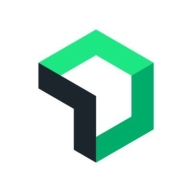

New Relic and AWS Auto Scaling are both potent tools in the application monitoring and scaling space. Based on user feedback, New Relic has the upper hand in monitoring due to its comprehensive support, while AWS Auto Scaling excels in scaling functionalities and integration with other AWS services.
Features: New Relic offers total observability, detailed metrics, and extensive support. AWS Auto Scaling provides robust automation, seamless scaling abilities, and excellent integration with other AWS services.
Room for Improvement: Users suggest New Relic should improve its cost-effectiveness, ease of configuration, and initial setup simplicity. AWS Auto Scaling could enhance customization options, provide more informative alerts, and improve adaptability features.
Ease of Deployment and Customer Service: New Relic is noted for straightforward deployment but has complexities in setup. Its customer service is praised for being responsive. AWS Auto Scaling integrates easily with AWS services but users need more guidance. Its customer service requires improvement despite good documentation.
Pricing and ROI: New Relic's high initial setup cost is offset by significant ROI from its insights. AWS Auto Scaling’s pricing is justified by its scalability benefits, though slower ROI realization is reported due to setup complexities.


AWS Auto Scaling monitors your applications and automatically adjusts capacity to maintain steady, predictable performance at the lowest possible cost. Using AWS Auto Scaling, it’s easy to setup application scaling for multiple resources across multiple services in minutes. The service provides a simple, powerful user interface that lets you build scaling plans for resources including Amazon EC2 instances and Spot Fleets, Amazon ECS tasks, Amazon DynamoDB tables and indexes, and Amazon Aurora Replicas. AWS Auto Scaling makes scaling simple with recommendations that allow you to optimize performance, costs, or balance between them. If you’re already using Amazon EC2 Auto Scaling to dynamically scale your Amazon EC2 instances, you can now combine it with AWS Auto Scaling to scale additional resources for other AWS services. With AWS Auto Scaling, your applications always have the right resources at the right time.
New Relic is a powerful tool for optimizing web pages, tracking user behavior, and monitoring application performance. It helps detect anomalies, generate metrics, and create dashboards for synthetics monitoring, container workloads, stress tests, and more.
New Relic provides organizations with comprehensive insights into APIs, infrastructure, and scalability. It supports mobile and web applications with features like java tracking, health maps, customizable dashboards, and drill-downs. Users benefit from its easy initial setup, accurate alerts, UI monitoring, error tracking, and traceability. New Relic supports multiple ecosystems with straightforward pricing and new feature introductions, offering end-to-end monitoring, thorough data analysis, and effective problem resolution.
What are New Relic's most important features?New Relic is leveraged in industries such as e-commerce, finance, and technology. It helps monitor web traffic, evaluate load balancing, and ensure applications meet performance standards. Companies use it for stress tests, container-based workloads, API monitoring, and infrastructure management. Its integration capabilities are valuable for maintaining performance and scalability across diverse ecosystems, aiding in thorough data analysis and problem resolution.
We monitor all Application Performance Monitoring (APM) and Observability reviews to prevent fraudulent reviews and keep review quality high. We do not post reviews by company employees or direct competitors. We validate each review for authenticity via cross-reference with LinkedIn, and personal follow-up with the reviewer when necessary.